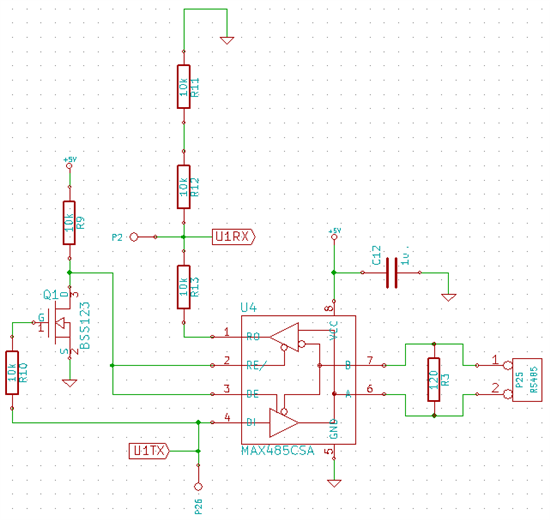We have a RS485 design that works with 5V systems, but we need one that will operate with 3.3V systems as well.
We're trying to migrate our design from the MAX485CSA+ (which only runs on 5V) to one of the TI RS485 chips. We have been working with the SN65HVD08 and SN65HVD17XX parts. However, we can't get any of the TI parts to work. We've spent a lot of time trying different things, but we haven't been able to figure it out. I need your help.
Below is a schematic of our circuit. The RS485 works with the MAX485CSA part. However, none of the TI parts work: specifically the microcontroller UART receiver doesn't get message from the RS485 bus and the RS485 bus doesn't get messages from the microcontroller UART transmitter. The resistors on the output of the RS485 translator are to shift the 5 volt output of the MAX485CSA to 3.3 volts for our microcontroller.
An oscilloscope probe shows that the TI part is getting a good signal on pin 4 (the transmit pin) with input high voltages of 3.4 volts, which is above the Vih of 2.25 and 2.0 volts for the TI chips.
Pin 1, the receiving pin, is locked at 3.6 volts and doesn't move under any condition.
The TI chip's output on pin A and B are the same with voltage levels of 5.4 volts with a waveform that is the inverse of signal on the transmit pin (pin 4).
Any suggestions? Thanks so much for your time!


